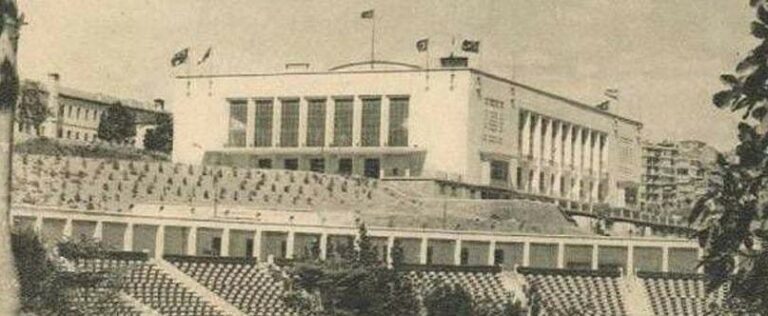
In the wake of the remarkable achievements by Turkish wrestlers at the 1948 World Olympic Games and the European Wrestling Championships, a pivotal decision was made to host the 1949 European Wrestling Championship in the vibrant city of İstanbul. Curiously, despite İstanbul’s historical significance in Turkish sports, the city lacked the essential infrastructure, notably sports halls.
To address this pressing need, an innovative architectural vision emerged, a brainchild of the renowned Italian architect Paolo
Vietti-Violi, known for his work on the Dolmabahçe İnönü Stadium. Collaborating with esteemed Turkish architects Sinasi Sahingiray and Fazil Aysu, this ambitious project sought to transform Istanbul’s landscape. On a brisk December 30th, 1948, Dr. Lütfi Kırdar, the esteemed Mayor and Governor of İstanbul, personally oversaw the commencement of construction for what would soon become the Istanbul Sports and Exhibition Centre.
During the foundation-laying ceremony, the suggestion arose to christen the Center in honor of Dr. Lütfi Kırdar, a testament to his contributions. However, Mr. Kırdar, displaying humility and selflessness, declined the offer, insisting that no establishment bear his name during his lifetime.
June 3rd, 1949, marked the momentous occasion when the European Wrestling Championship found its home in the İstanbul Sports and Exhibition Centre. Subsequently, on October 2nd, 1949, the venue hosted the İstanbul International Commerce and Industry Fair, signaling the beginning of a new era.
Over the ensuing years, this colossal hall within the İstanbul Sports and Exhibition Centre witnessed an array of national and international competitions, ranging from basketball and volleyball to handball and wrestling. It served as the stage for boxing, weightlifting, ice hockey, ice skating, dance, circus shows, fairs, grand concerts, meetings, and exhibitions, becoming Turkey’s premier indoor sports and exhibition hall.
Notably, Dr. Lütfi Kırdar maintained his steadfast stance against having his name attached to any establishment during his lifetime, a testament to his character and modesty. It wasn’t until February 17th, 1988, following his passing, that the building was rechristened as the “İstanbul Lütfi Kırdar Sports and Exhibition Centre.”
From 1988 to 1996, the İstanbul Lütfi Kırdar Sports and Exhibition Centre continued its legacy as a prominent sports and exhibition venue. Then, in 1996, the United Nations made a historic decision to host the Habitat II Summit in İstanbul, the most extensive UN conference of the 20th century. In recognition of this monumental event, the center underwent a transformation and was reborn as the “International Convention Centre.” Under the name “İstanbul Lütfi Kırdar International Convention and Exhibition Centre – ICEC,” it embarked on a new journey, becoming the undisputed leader in Turkey’s convention and exhibition industry, a legacy that endures to this day.
